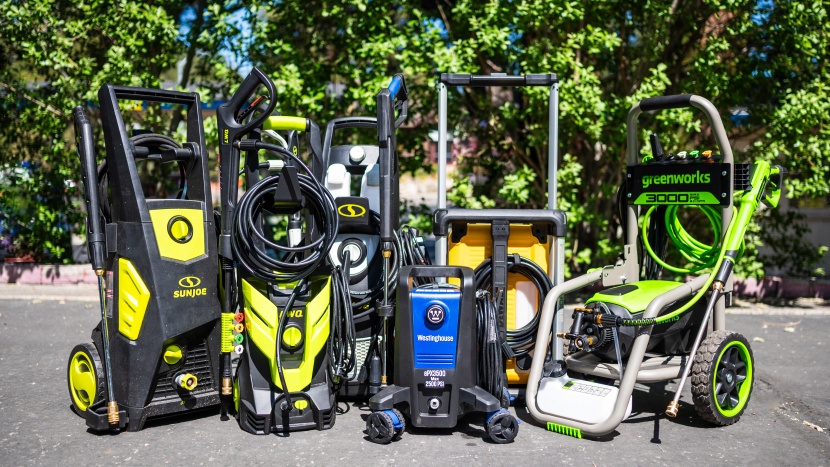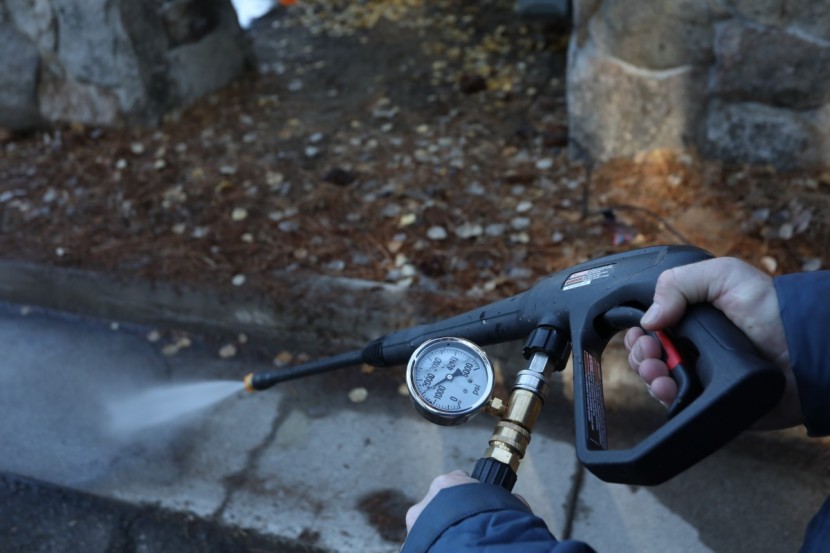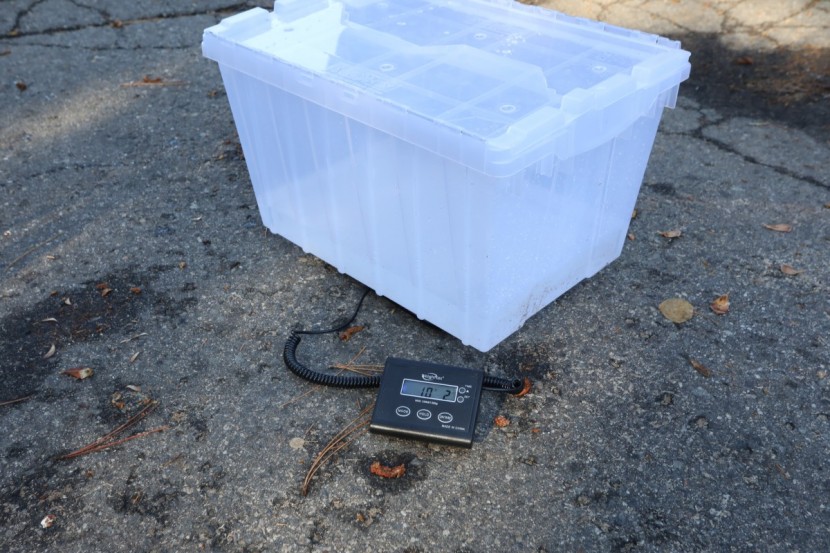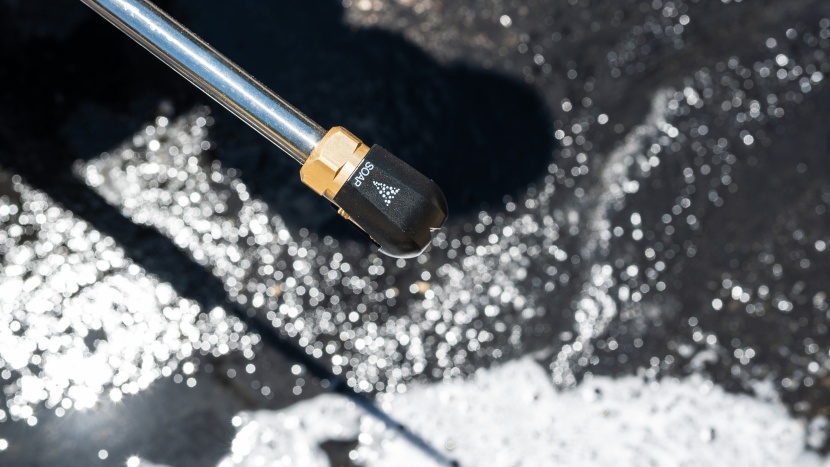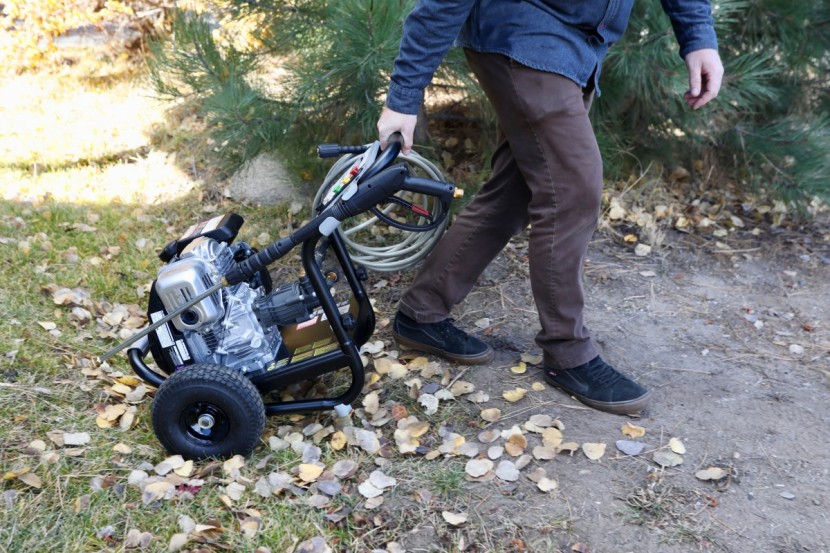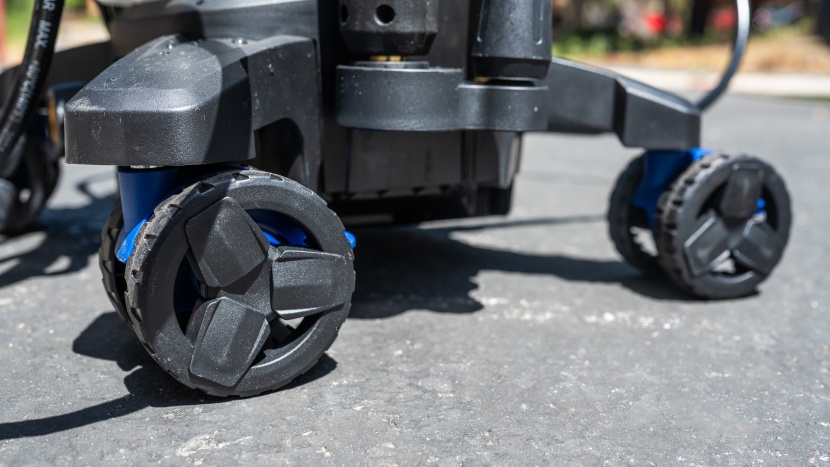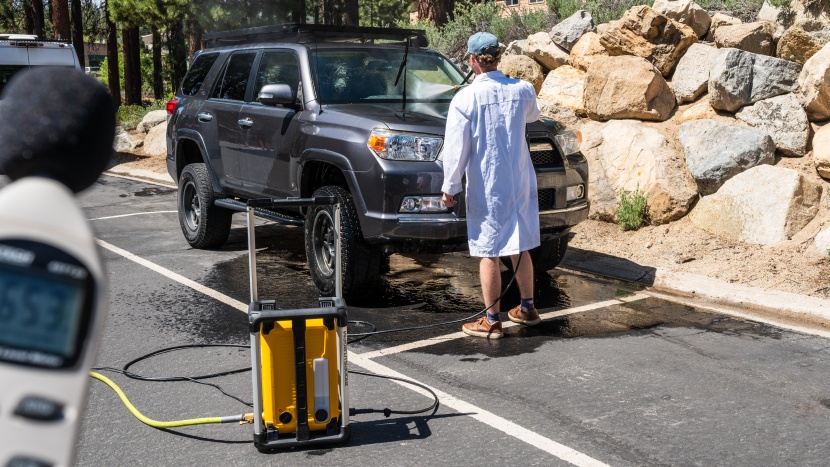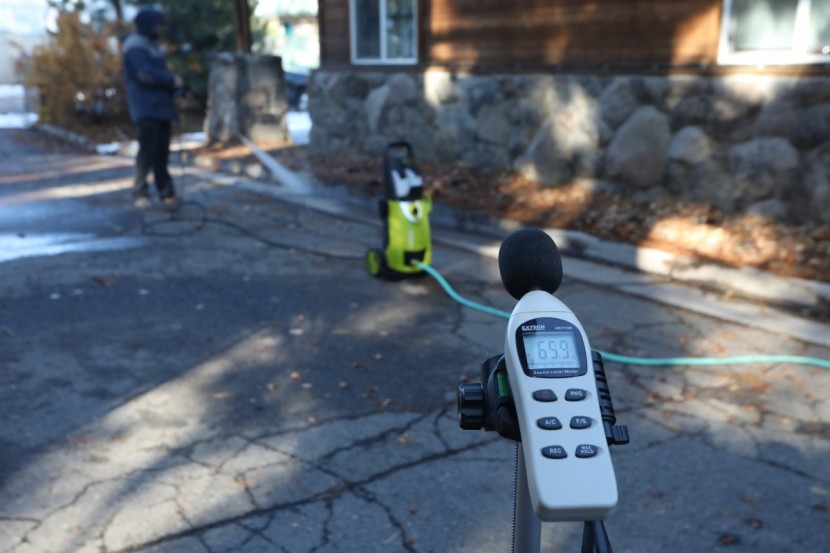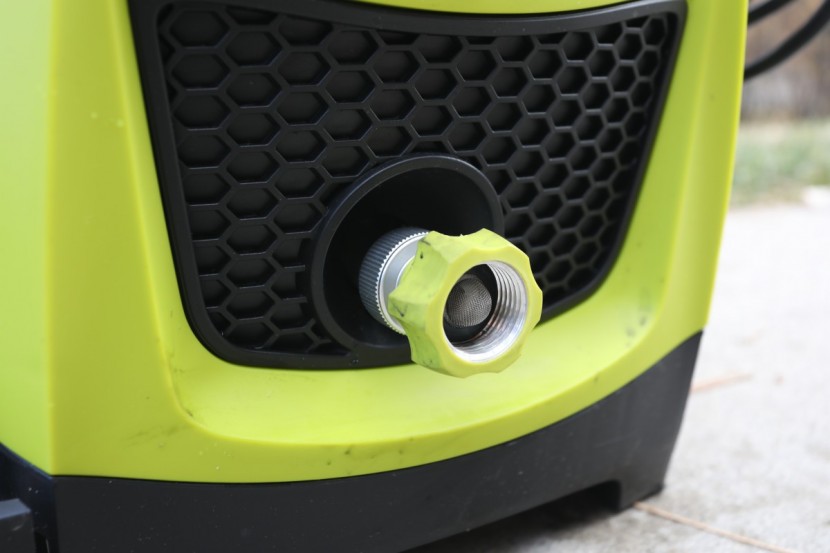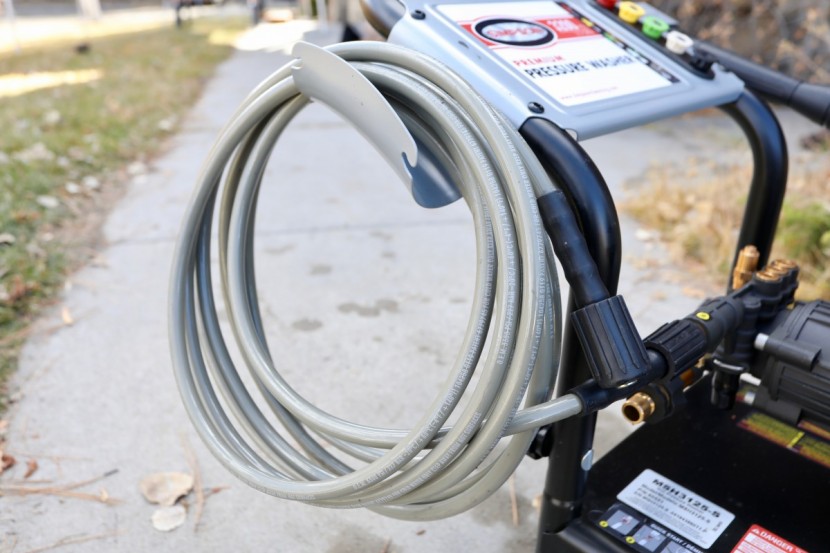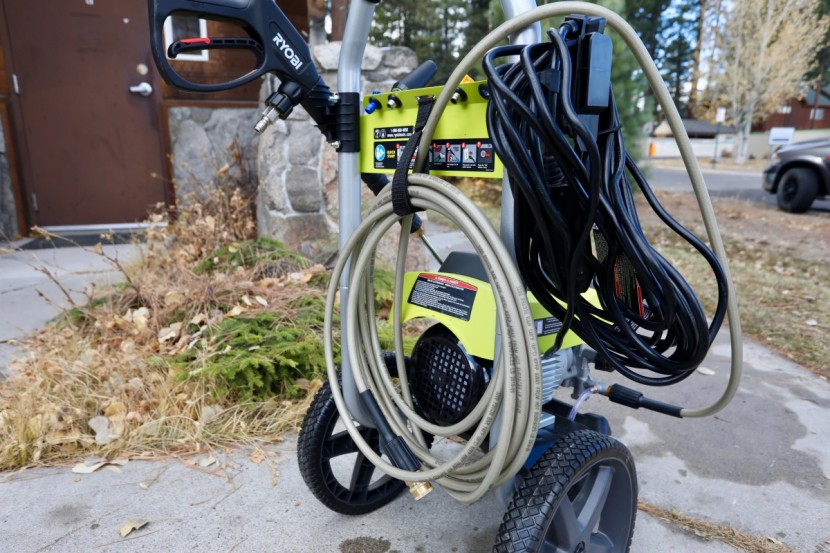Many websites focusing on product reviews simply gather information from manufacturers or scour user-generated reviews to guess which models are the best based on research. We go significantly further than that. We exhaustively research for days or weeks on end and then proceed by purchasing every product at full price to eliminate any possibility of bias. Once we get our hands on the various machines, tools, and devices, we go to town putting them through real-world, in-depth testing to discover which ones are truly the best, not just supposed to be the best.
To determine which pressure washers are genuinely better, we use objective tests, subjective judgment, and our professional expertise to narrow our assessment down to four key metrics with a weighted score according to their importance. Please read below for a full explanation of our exhaustive experimental techniques.
Cleaning
The primary purpose of any pressure washer is to jet filth and debris away from a vehicle, driveway, patio, or other piece of property. Consequently, the first thing we want to consider is each model's cleaning performance. Before we developed any tests, we took the most obvious course of action — hooking every machine up and then jetting and spraying anything and everything around that needed washing. After cleaning gutters, washing filthy trucks, and blasting the scum off exterior walls, we had a subjective feel for the difference between the power and settings of each model; we were then confident and ready to develop tests for this metric.
Pressure and flow rate both influence cleaning power, so the eggheads of the pressure washer world have coined a term known as “cleaning units” (CU) that accounts for a combination of these two factors. CU is calculated by simply multiplying gallons per minute of flow (GPM) by pounds per square inch of pressure (PSI).
Here at GearLab, we often find that manufacturers' claims don't always align with our findings, so we decided to measure CU for each model ourselves. To measure PSI, we purchased an in-line professional pressure gauge along with the appropriate fittings to accommodate the gauge in between the end of each high-pressure hose and its wand.
In order to determine an accurate GPM, we broke out the old trusty stopwatch, a water tank, and a scale. We then let each washer run for 60 seconds into the tank with its smallest included nozzle and then weighed the water. Knowing that water weighs 8.34 pounds per gallon, we were then able to calculate GPM, then CU.
The next test we developed was a blend of quantitative and qualitative analysis. Considering that one of the most common uses for a pressure washer is to wash down boats, toys, and especially vehicles, we wanted to see which washer produced the most suds and bubbles during a vehicle washdown test. We hooked each unit up with their appropriate soap nozzles, or in one case, a foam cannon, and noted how well they performed while scrubbing down a car.
Next, we built a 12-foot-long wooden ramp, adjusting it to an incline of 25 degrees, which we dubbed our “testing trough.” Along the sides of the trough, we drew markings of increments every 0.25 feet. The goal with the trough was to see how far up the incline each pressure washer could sustainably hold a standard bocce ball. This provided us with a tangible and observable way to add another numeric value to our cleaning metric.
Portability
One perk of owning your own pressure washer is the ability to use it throughout your entire property or even a different location altogether. When it comes to portability, though, not all machines we tested are created equal.
The first measurement we took for this metric was the weight of each model, although we quickly learned that heaviness is not synonymous with portability. Some of the tools that tipped the scale were the most convenient to roll around due to their large tires and wisely placed handles.
That said, those models are also the hardest to get into and out of a vehicle. Conversely, the lighter versions might be convenient to carry around and store, but if you're dealing with rough terrain, you might end up carrying them for quite a while, whereas a heavy version might be a breeze to wheel around.
We took each model and tried pushing and pulling them around on a variety of common surfaces to assess how well they moved once they were at their home or job site.
Some types of wheels will effortlessly glide across the driveway but won't move an inch in the dirt or grass.
Next, we measured the cubic dimensions of each model to accurately determine how much space they will occupy in your garage, shop, or vehicle.
Noise
When it came to noise, we immediately noticed a significant degree of variance among the pressure washers we purchased. Some models emit nothing more than a mere purr, while others roar throughout the whole block. There are electric versions that only make noise while the trigger is depressed; there are also some that constantly run once they are turned on. Then there are the gasoline-powered models that not only constantly run but also get significantly louder while in use. To test noise, we began by having a panel of judges identify any models that emitted an especially annoying or bothersome pitch or whine.
Next, we took a sound meter reading from directly next to the machine to measure decibel levels. Finally, we took a second decibel reading from a distance of 25 feet away.
Ease of Use
How difficult these tools are to use can be a determining purchasing factor for many people. If you're a gearhead, you might not mind a model that requires a manual start involving choke levers, a gas can, and a warm-up period. Another person may just want to plug it in, turn it on, and start washing. To score each model for ease of use, we examined the subtleties that distinguish each model from the others. First of all, we noted the location of the hose connections and how trying they are to connect or disconnect, their location on the machine, and how likely they are to get tangled.
Next, we looked at the hoses themselves. We measured the length of each hose and then made a judgment on how stiff each one is and how difficult they are to store. Some models came with reels or handy hose racks, while others came with hooks, and a few came with nothing more than a Velcro strap, where the user is expected to figure it out on their own.
We then looked at the length and location of the cord for the electric models and where they are looped up and stored on the machine. Much like the hoses, there are many various ways in which the manufacturers have designed their models to stow them.
We considered maintenance, which just boiled down to whether the model was gas-powered or electric. Electric models should have zero maintenance. The fossil fuel models, however, will require regular gas refills, oil changes, and other small engine maintenance tasks.
We also considered the stability of each machine. Some models feel sturdy and stout; others can easily be pulled over if a hose gets kicked or yanked. We then noted the various storage locations for nozzles and any other compartments for attachments around each washer. Finally, we rated and recorded the type of soap container each model had, if any, and how intuitive they were to use.
Conclusion
Testing pressure washers was a blast for us. Our passion is to provide you with the best information possible, so that you have the knowledge and expertise to make the perfect purchase.

